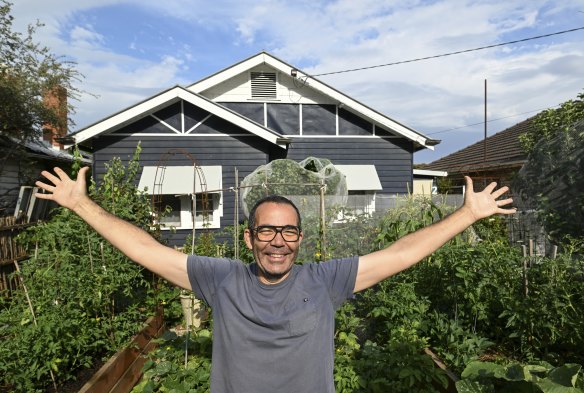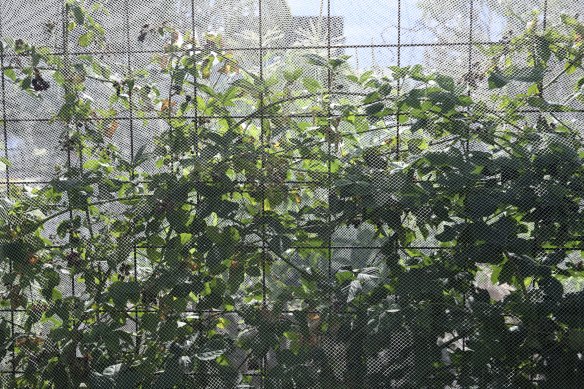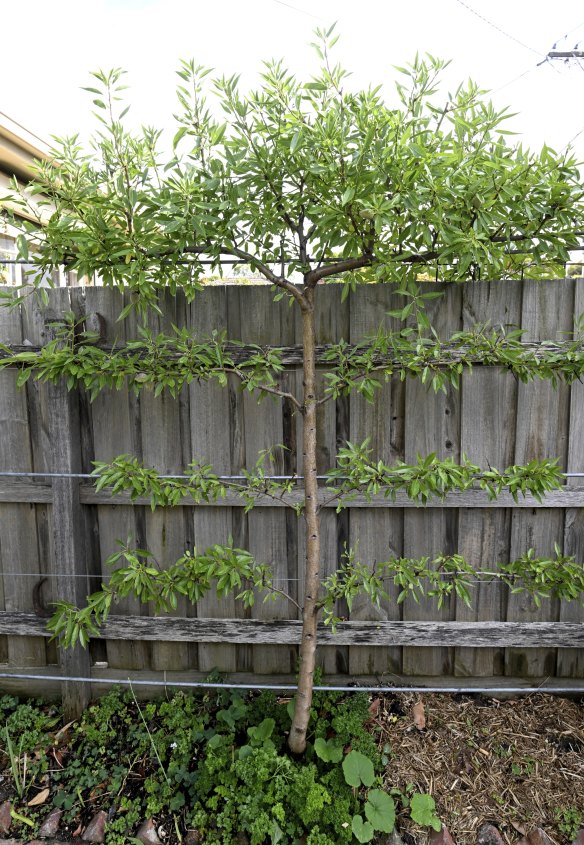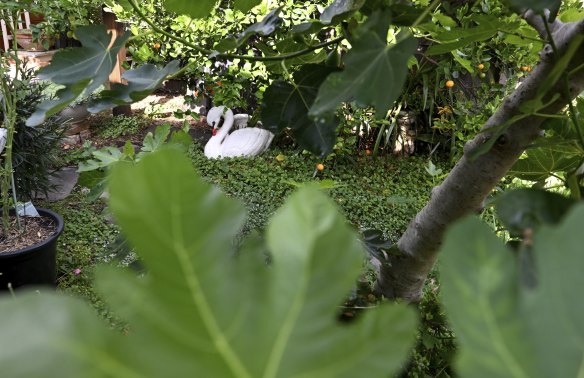About this time every new year, I ruminate on all the ways I could make my food growing more productive. More constancy, more forethought and better succession sowing invariably top my list. But to spur me into action I actually need to see – over and over again – gardens that get it right.
Looking at how other people grow their own is a great way to glean inspiration and get practical ideas for your own efforts and this month’s opening of three productive spaces in Footscray promises to be no exception. These gardens, which are opening on Sunday February 12 with Open Gardens Victoria, will be instructive for anyone looking for ideas.
Francisco Fisher in his edible gardenCredit:Penny Stephens
They are all on relatively compact blocks, and are a lesson in how even small spaces can turn out big crops. They also highlight how quickly – in gardening terms at least – you can fashion an edible space, and, in turn, change what doesn’t work.
One of these Footscray gardens has been only 12 months in the making and already its wicking beds – made out of IBC containers – are teeming with tomatoes and beans. There are zucchini beds, passionfruit vines and mushroom logs.
Blackberries are protected by netting in Fisher’s front gardenCredit:Penny Stephens
Another of the gardens reveals just how subtropical it is possible to go in temperate old Melbourne. Alongside such regular fare as apples, citrus and stone fruits, this space contains the likes of white sapote, cherimoya and wampee.
And the third has herbs, fruits and vegetables butting up against beautifully lurid roses and spotty-leaved calla lilies. This last one has been fashioned by Francisco Fisher and Michael West over the past 14 years but contains threads of the florist who lived here for 62 years before them.
An espaliered almond doesn’t take up a lot of room on a side fence in Fisher’s gardenCredit:Penny Stephens
Fisher says that he and West wanted to retain some of the florist’s flamboyance as a nod to the past. But in this garden they have followed their own paths too.
Every blade of grass – nature strip included – has either been smothered by cardboard, blood and bone, soil and mulch or simply dug up. The property’s deep clay soil has been steadily improved with compost and manure slurries that Fisher makes by soaking horse and cow manure in buckets of water. He also applies lashings of sugarcane mulch.
A fig and concrete swan in Fisher’s back gardenCredit:Penny Stephens
Fisher, who has a background in sculpture, has built steel frames to train the almond, pear and lime trees he is growing as space-saving espaliers on a side fence. He has also bent a huge sheet of reinforcing mesh into a walk-through arbour for passionfruit vines, and has constructed three large raised beds for vegetables.
Much of this food growing is taking place in full view of the street because the front garden is where most of the open space is and it also has better light. Fisher and West haven’t stopped at their front fence either. The fence itself is covered in pumpkins, while they have planted herbs, an elderberry and a string of native plants on the nature strip.
Fisher says that when gardening he invariably he finds himself talking with passersby and that he and West and have found themselves to be part of a “community of gardeners” who swap ideas. During holidays, they water each others’ gardens and, in extreme heat, throw sheets over each others’ hydrangeas.
He says talking to other gardeners has helped him refine his own space and that a process of trial and error is also crucial. “You just have to be brave and put something in and, if it doesn’t work, pull it out and try something else. Don’t feel you have to be a master at everything to get started.”
Fisher and West started slowly. They didn’t create permanent structures or plant trees in the ground until they had observed how the light moved across the garden in all seasons. “We needed to see the direction of the sun and where we could put things. We didn’t want trees casting shade.”
They also wanted a garden where no space was wasted. Fisher, whose family migrated to Australia from Chile when he was five, says gardens “can be anything you want them to be”. He says he remembers his mother standing in a fruit and vegetable shop in Sydney in the 1970s “quietly crying” about the lack of diversity.
“Avocados, corn, coriander, all the things we had taken for granted were difficult to find then. My mother grew up surrounded by food gardens and (in Australia) she taught me how to garden. Gardens can be a place where dreams happen and for me that involves food.”
Visit these spaces and it might involve food for you too.
The three gardens are open from 10am to 4.30pm on Sunday 12 February, $8 each or $20 for all three. Go to opengardensvictoria.org.au for the addresses and more information.
Make the most of your health, relationships, fitness and nutrition with our Live Well newsletter. Get it in your inbox every Monday.
Most Viewed in Lifestyle
From our partners
Source: Read Full Article











